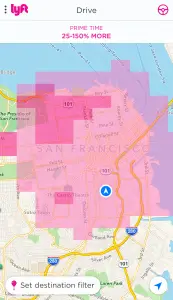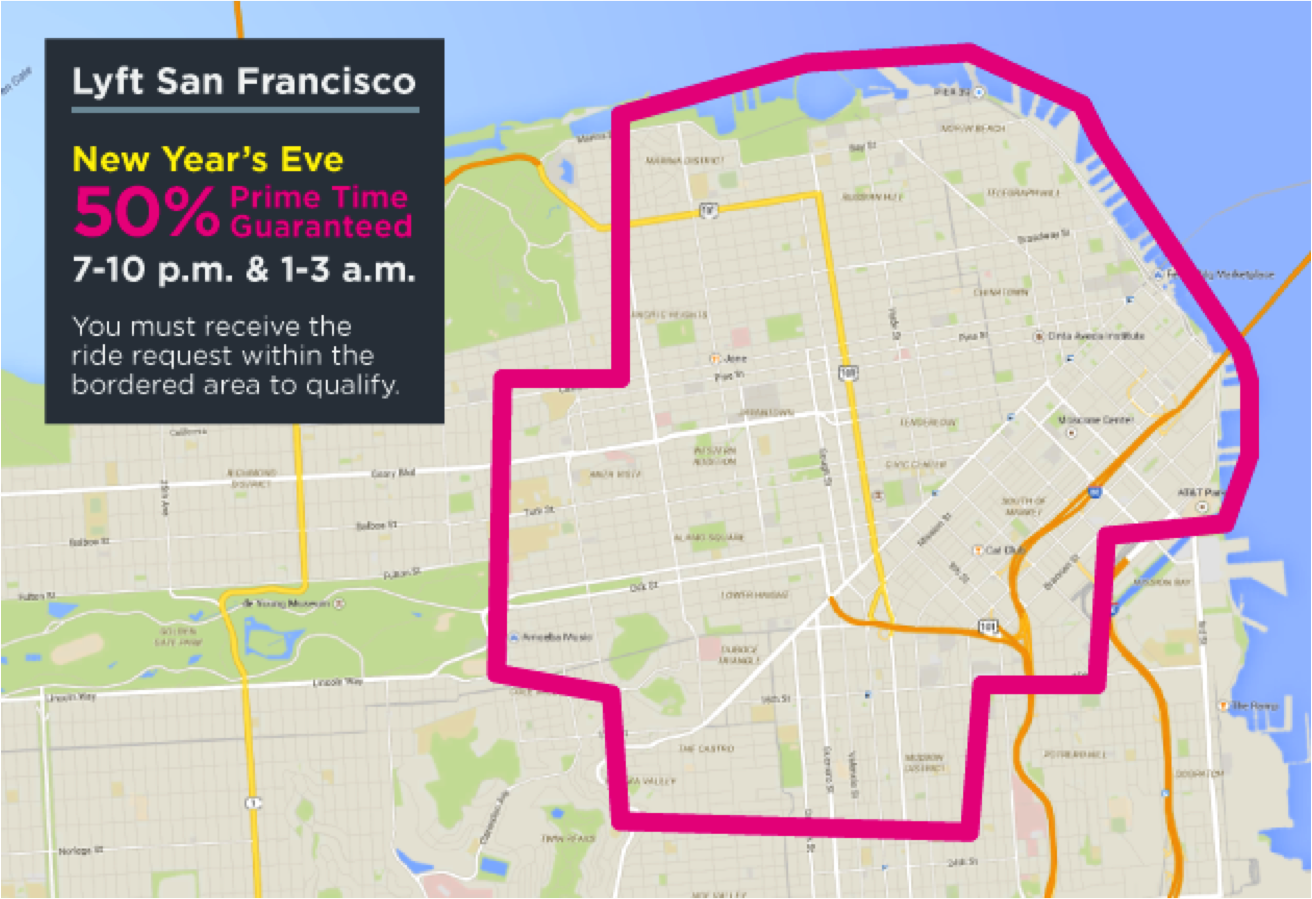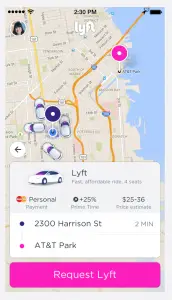Many rideshare users may be familiar with Uber’s “Surge Pricing” but did you know that Lyft has a similar service, which they call Prime Time Pricing?
What is Prime Time?
According to Lyft, Prime Time pricing occurs when the demand for Lyft rides is greater than the number of Lyft drivers on the road.
Why does Lyft have Prime Time?
Similar to Uber’s surge pricing, Prime Time encourages drivers to go out and complete rides when the demand for rides is high. In order to meet the excess demand at certain busy times of the day, Prime Time serves as a way to get more Lyft drivers on the road and getting passengers where they need to go, and in return passengers are charged an additional percentage on top of the original ride price.
How is it calculated?
At the end of your ride, Prime Time adds a pre-determined percentage of your base ride amount. This is calculated prior to the Trust and Safety fee as well as taxes and airport fees. The specific percent is calculated based on a function of supply and demand (if demand is much higher than supply, the increased percentage will reflect this).
How do you know when it’s Prime Time?
For passengers, on your initial ride request screen the Prime Time notification will appear if the pricing is in effect. It will also indicate the Prime Time percentage, and you have to accept the higher fare before requesting a Lyft ride.
Is it good for Lyft drivers?
Prime Time pricing allows Lyft drivers to earn more money depending on how/when the Prime Time pricing occurs. On the Lyft App for drivers, a heat map shows that allows riders to see where the demand for rides is the highest. As pictured below, the shaded areas display where the Prime Time is in effect for drivers.

How is it different from Uber Surge Pricing?
Prime Time Pricing is very similar to Uber’s Surge Pricing, except Prime Time pricing uses a percentage, whereas Uber Surge Pricing reflects the fare increase by the amount it will be multiplied (i.e. 2X the normal fare). Another difference between the two pricing tactics is that generally, Uber tends to have higher surge rates than Lyft when it gets busy. It is also easier to avoid Prime Time than Surge Pricing because the areas where Prime Time is enacted are usually smaller than the Surge Pricing area.
For more information on Uber Surge Pricing check out our article here: http://www.taxifarefinder.co/newsroom/?p=3775
Felicia is an intern at Unleashed, LLC. She is from upstate NY, and is currently pursuing a Marketing degree at Bentley University. One day she hopes to travel the world and visit every continent.


